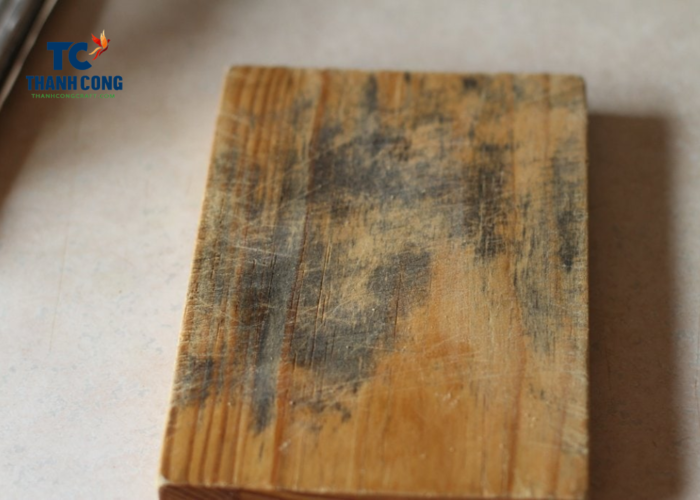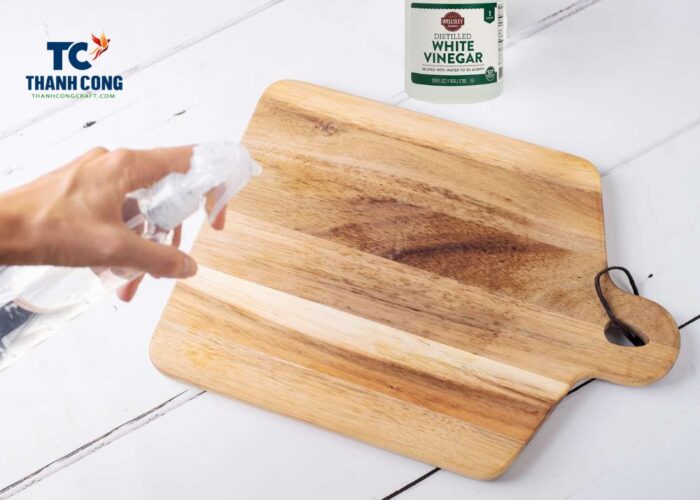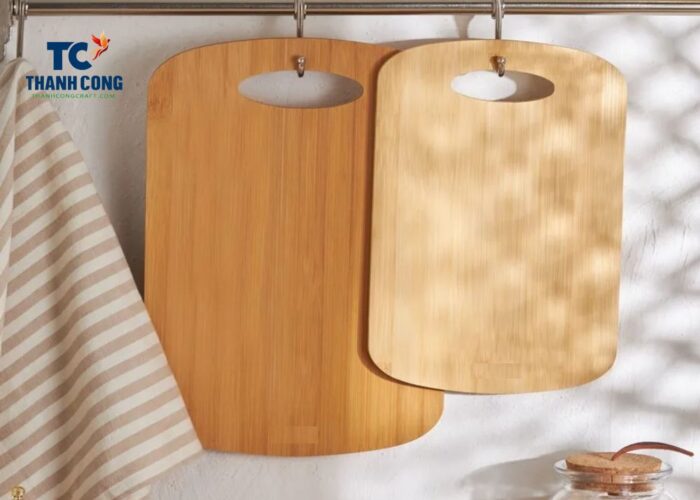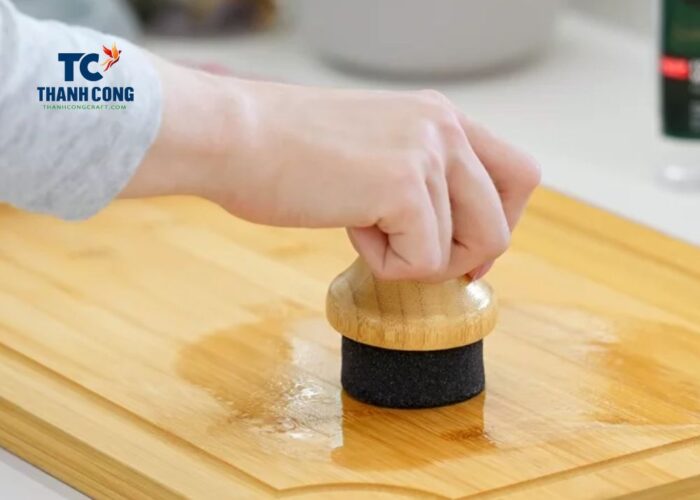Addressing the challenge of mold on bamboo cutting boards is paramount. Mold not only diminishes the longevity of these essential kitchen tools but also presents a potential hazard to the well-being of you and your family.
The presence of mold on a bamboo cutting board raises questions: Mold on bamboo cutting board? How to remove mold from bamboo cutting board? In this article, we will explore a range of straightforward and efficient methods to tackle this issue head-on.
Contents [hide]
1. Is mold on bamboo cutting boards dangerous?
Can bamboo cutting boards get mold? Bamboo cutting boards are susceptible to mold growth due to their ability to retain moisture. Moisture and food debris left in knife cuts and scratches on cutting surfaces can be a source of nutrients for mold if not cleaned thoroughly.
A common case is black mold on bamboo cutting board.

Mold on a bamboo cutting board is dangerous. Mold produces spores, which can contaminate food and, when ingested, may lead to various health issues, especially for individuals with mold allergies or sensitivities. Additionally, some molds produce mycotoxins, which can be harmful.
If not properly cleaned and maintained, mold can grow on the surface of bamboo cutting boards, posing both durability and health concerns. Some potential health issues associated with mycotoxin exposure include:
- Gastrointestinal Issues: Ingesting mycotoxins can lead to gastrointestinal problems such as nausea, vomiting, abdominal pain, and diarrhea.
- Allergic Reactions: Some individuals may experience allergic reactions to mold, including respiratory symptoms like sneezing, coughing, wheezing, and nasal congestion.
- Respiratory Issues: Prolonged exposure to mold spores and mycotoxins in the air can contribute to respiratory problems, especially in individuals with asthma or other respiratory conditions.
- Immune System Suppression: Certain mycotoxins have been associated with immune system suppression, potentially increasing susceptibility to infections.
- Neurological Effects: There is some evidence suggesting that exposure to certain mycotoxins may have neurological effects, but the research in this area is still evolving.
Regular cleaning, proper drying, and preventive measures can help mitigate the risk of mold growth on bamboo cutting boards.
2. How to remove mold from bamboo cutting board?
Bamboo is a resilient and eco-friendly material, but it is susceptible to mold if not properly maintained. To get mold off on bamboo cutting boards, it’s essential to undertake regular cleaning and disinfection after each use and store the board in a dry, well-ventilated area.
Follow these straightforward steps to remove mold from bamboo cutting board: Dampen a piece of cotton or a clean cloth in a solution of water and white vinegar (1:1 ratio). Wipe the entire surface of the bamboo cutting board with this mixture, as vinegar possesses disinfectant and antibacterial properties, hindering mold growth.

If the bamboo cutting board has black mold or green spots indicating mold, use sandpaper or a scraper to remove the moldy bamboo layer. Then, clean the mold by wiping the board again with the water and vinegar solution mentioned above.
Ensure thorough drying by either exposing the bamboo cutting boards to sunlight or using a hair dryer. Make certain that there is no residual moisture before storing it.

Safeguard the bamboo cutting boards by applying cooking oil or mineral oil to the board once a month. This practice not only enhances the board’s sheen but also provides resistance against bacteria and mold.

When storing the board, opt for hanging it up or standing it vertically. Avoid stacking multiple boards or placing them near heat sources. Storing the board in a closed cabinet or a plastic bag creates a conducive environment for mold growth.
3. How to prevent mold on the cutting board?
Preventing mold on a cutting board is crucial for maintaining both its longevity and the safety of your kitchen. Here are some effective tips on how to prevent mold growth on a cutting board:
- After each use, wash the cutting board with hot, soapy water to remove any food residues and bacteria. Use a brush or scrubber to clean the board’s surface thoroughly, reaching into any grooves or knife marks.
- Regularly sanitize the cutting board using a solution of water and white vinegar (1:1 ratio) or a mild bleach solution. This helps eliminate any remaining bacteria and inhibits mold growth.
- Allow the cutting board to air-dry completely before storing it. Moisture is a significant factor in mold development, so a dry board is less prone to mold growth. Refrain from soaking the cutting board in water for extended periods. Excessive moisture can penetrate the wood cutting, creating an environment conducive to mold growth.
- Apply a thin layer of food-grade mineral oil or cutting board oil to the surface of the board once a month. This helps maintain the wood’s integrity, preventing cracks and providing an additional barrier against mold. Afterward, store the cutting board in a well-ventilated area. Avoid enclosed spaces or tightly sealed containers that can trap moisture and promote mold growth.
- Designate specific cutting boards for different types of food (meat, vegetables, fruits) to prevent cross-contamination. This reduces the likelihood of introducing harmful bacteria that can contribute to mold growth.
- Periodically inspect the cutting board for any signs of wear, damage, or mold. Promptly address any issues to prevent further problems.
In conclusion, safeguarding your bamboo cutting board from mold is essential for both its longevity and the well-being of your kitchen. By following a few straightforward steps, you can effectively address and prevent mold growth.
If you have any further questions, don’t hesitate to send thanhcongcraft an email us at info@thanhcongcraft.com or message us at WhatsApp: +84967485411. Hope to serve you soon! Best regard!


